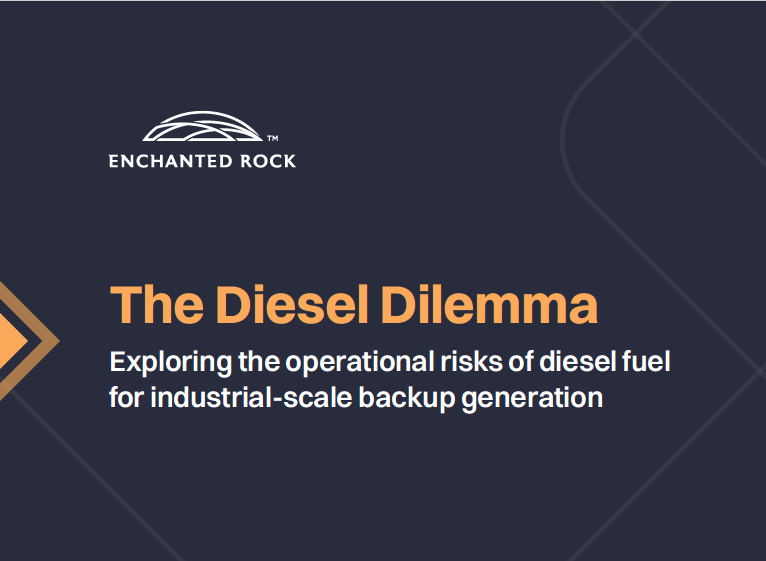Education Hub
Our collection of media items to support your path towards electrical resiliency.
Industry
Industry
Categories
Category
[datacenter_tag_image]
The Diesel Dilemma explores the risks, inefficiencies, and hidden costs of relying on diesel-fueled backup power for mission-critical operations, using a 500 MW data center to show how large-scale operations are impacted.
[datacenter_tag_image]
- Data Centers
[datacenter_tag_image]
Data centers are growing at record speed, but outdated solutions like diesel backup and delayed utility interconnections can’t keep up with AI-driven demand. In this white paper, energy expert Peter Asmus shows how onsite, flexible generation offers a faster, cleaner, and more affordable path forward—one that supports both uptime and the grid. Download now to see why Enchanted Rock’s approach is redefining how data centers secure sustainable, reliable power.
[datacenter_tag_image]
- Data Centers
AI needs power. The grid can’t keep up. Flexible capacity offers a scalable solution to data center power bottlenecks.
 [datacenter_tag_image]
[datacenter_tag_image]
- Data Centers, Energy Utilities
California is achieving ambitious clean energy goals, yet diesel generators still support critical infrastructure. Shifting to natural gas can cut pollution, address public health concerns, and strengthen the grid.
[datacenter_tag_image]
- Utilities
Duke University’s latest white paper spotlights 100 GW of headroom in the U.S. grid and how large, flexible loads like data centers can adapt without major buildouts. Enchanted Rock is cited for expertise in behind-the-meter generation and grid flexibility.
[datacenter_tag_image]
- Utilities
Explore how U.S. utilities are expanding beyond power delivery with value-added services like microgrids, EV support, DERs, and demand response. This report shares utility leader insights and emerging trends shaping customer offerings.
[datacenter_tag_image]
- Grocery & Retail
This paper explores risks to the electric grid—from aging infrastructure to cyber threats—and compares backup power options, helping businesses choose the best solution to strengthen resiliency and ensure uninterrupted operations.



